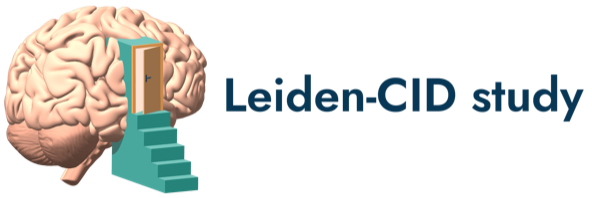-
measure Cheating - Dog Task
Study: L-CID Mode of collection: MeasurementsAndTests Behavioral/cognitive task Available measurements: Middle Childhood Cohort MCC - T1 MCC - T3The Cheating - Dog task aims to measure behavioral control by giving a child an opportunity to cheat while predicting which of two dogs will receive a bone. The child is instructed that they will receive 5 cents for every correct prediction, and to tell the researcher whether their prediction was correct or incorrect.Created October 17, 2024 • Updated October 20, 2024 -
measure EEG - Social Network Aggression Task - Early Childhood (SNAT - EC)
Study: L-CID Mode of collection: MeasurementsAndTests EEG Available measurements: Early Childhood Cohort ECC - T2 ECC - T3The EEG - Social Network Aggression Task - Early Childhood (SNAT - EC) measures brain activity during the Social Network Aggression Task - Early Childhood, in which the child can respond aggressively in response to different types of peers.Created October 17, 2024 • Updated October 20, 2024 -
measure Delay Discounting - Money
Study: L-CID Mode of collection: MeasurementsAndTests Behavioral/cognitive task Available measurements: Early Childhood Cohort ECC - T6
Middle Childhood Cohort MCC - T2 MCC - T3 MCC - T4 MCC - T5 MCC - T6 MCC - T7The Delay Discounting - Money (hypothetical) task is a delay gratification task that aims to measure impulsivity (behavioral control) by giving the child the option to either receive a small amount of money now or more money later.Created October 17, 2024 • Updated October 20, 2024 -
measure Social Delay Discounting Task (SDDT)
Study: L-CID Mode of collection: MeasurementsAndTests Behavioral/cognitive task Available measurements: Middle Childhood Cohort MCC - T7The Social Delay Discounting Task (SDDT) aims to measure impulse control in a social context. In the task, the child is asked first to choose between a small amount of money now or a larger amount later. Next, the child is presented with a choice between receiving a smaller amount of money for themselves immediately or a larger amount for a friend at a...Created October 17, 2024 • Updated October 20, 2024 -
measure Stop-Signal Task - Cars
Study: L-CID Mode of collection: MeasurementsAndTests Behavioral/cognitive task Available measurements: Early Childhood Cohort ECC - T1 ECC - T2 ECC - T3 ECC - T4The Stop-Signal Task - Cars aims to measure behavioral inhibition by having the child inhibit their reaction in response to a quickly appearing signal. During the task, the child is instructed to touch a picture of a car appearing on the screen as quickly as possible, and to withhold touching the screen when a "Stop" sign appears. The child has to respond...Created October 17, 2024 • Updated October 20, 2024 -
measure Cheating - Ball Throwing
Study: L-CID Mode of collection: MeasurementsAndTests Behavioral/cognitive task Available measurements: Early Childhood Cohort ECC - T1The Cheating - Ball Throwing task aims to measure behavioral control by giving the child an opportunity to cheat while throwing a ball. During the game, children have to stay behind a line and can throw each ball only once. After the instructions, children practice the game with the research assistant. After the practice session, the research assistant...Created October 17, 2024 • Updated October 20, 2024 -
measure Stop-Signal Task - Arrows
Study: L-CID Mode of collection: MeasurementsAndTests Behavioral/cognitive task Available measurements: Early Childhood Cohort ECC - T5 ECC - T6
Middle Childhood Cohort MCC - T1 MCC - T2 MCC - T3 MCC - T4 MCC - T5 MCC - T7The Stop-Signal Task - Arrows aims to measure behavioral inhibition by having the child inhibit their reaction in response to a quickly appearing signal. During the task, left- and right-pointing arrows appear on the screen. When the arrow points left, the child has to press the left button, and when the arrow points right, the child has to press the...Created October 17, 2024 • Updated October 20, 2024 -
measure Cheating - Word puzzle
Study: L-CID Mode of collection: MeasurementsAndTests Behavioral/cognitive task Available measurements: Early Childhood Cohort ECC - T6
Middle Childhood Cohort MCC - T2The Cheating - Word Puzzle task aims to measure behavioral control by giving a child an opportunity to cheat when making a word puzzle. In the task, the child is instructed to come up with the correct word for each picture, with increasing difficulty. The more correct answers, the more money the child can earn. During the instruction, the researcher...Created October 17, 2024 • Updated October 20, 2024 -
measure Stop-signal anticipation task - functional MRI
Study: YOUth Mode of collection: MeasurementsAndTests MRI Available measurements: Child and Adolescent 9 years 12 yearsStop-signal anticipation task - functional MRI consists of a functional Magnetic Resonance Imaging (fMRI) scan that was acquired while subjects performed the Stop-signal anticipation (inhibition) experiment. The task aims to measure performance and brain activity during actual stopping as well as during the anticipation of stopping. Trials begin with the...Created October 17, 2024 • Updated October 20, 2024 -
measure Child Gap Overlap Task - Antisaccade
Study: YOUth Mode of collection: MeasurementsAndTests Eyetracking Available measurements: Baby and Child 6 years
Child and Adolescent 9 years 12 yearsThe Gap-overlap task is a gaze contingent paradigm that measures visual attention shifting between a central and a peripheral stimulus. This is thought to be a key process underlying behavioral control. The Gap-overlap task contains three conditions; i) Gap, in which the central stimulus disappears 200ms before the appearance of the peripheral target; ii)...Created October 17, 2024 • Updated October 20, 2024 -
measure Child Gap Overlap Task - Prosaccade
Study: YOUth Mode of collection: MeasurementsAndTests Eyetracking Available measurements: Baby and Child 6 years
Child and Adolescent 9 years 12 yearsThe Gap-overlap task is a gaze contingent paradigm that measures visual attention shifting between a central and a peripheral stimulus. This is thought to be a key process underlying behavioral control. The Gap-overlap task contains three conditions; i) Gap, in which the central stimulus disappears 200ms before the appearance of the peripheral target; ii)...Created October 17, 2024 • Updated October 20, 2024 -
measure Delay Discounting - hypothetical
Study: YOUth Mode of collection: MeasurementsAndTests Behavioral/cognitive task Available measurements: Child and Adolescent 9 years 12 yearsThe Delay Discounting task is the most widely used paradigm to measure the capacity to wait for a hypothetical monetary reward in children between 8-18 years old. A child is given a series of option between a variable immediate monetary reward and 10 Euros after a certain delay. The delay of the 10 Euro reward varies between 2, 30, 180, or 365 days. Each...Created October 17, 2024 • Updated October 20, 2024 -
measure Stop-signal anticipation task
Study: YOUth Mode of collection: MeasurementsAndTests Behavioral/cognitive task Available measurements: Child and Adolescent 9 years 12 yearsThe Stop-signal anticipation task aims to measure performance during actual stopping as well as during the anticipation of stopping. Trials begin with the presentation of a cue (0, * or **), representing the stop-signal probability (0, 22 and 33% respectively). Permanently visible are three horizontal white lines, and the goal is to stop a rising bar as...Created October 17, 2024 • Updated October 20, 2024 -
measure Infant Stop Signal Anticipation Task
Study: YOUth Mode of collection: MeasurementsAndTests Behavioral/cognitive task Available measurements: Baby and Child 6 yearsThe Stop Signal Anticipation task is adopted from Zandbelt and Vink (Vink et al., 2014, Zandbelt et al., 2008) and is also used as MRI task in the YOUth Child and Adolescent cohort. The Stop Signal Anticipation task measures response inhibition, which is considered an important aspect of behavioral control. In the task, children are instructed to stop a...Created October 17, 2024 • Updated October 20, 2024


